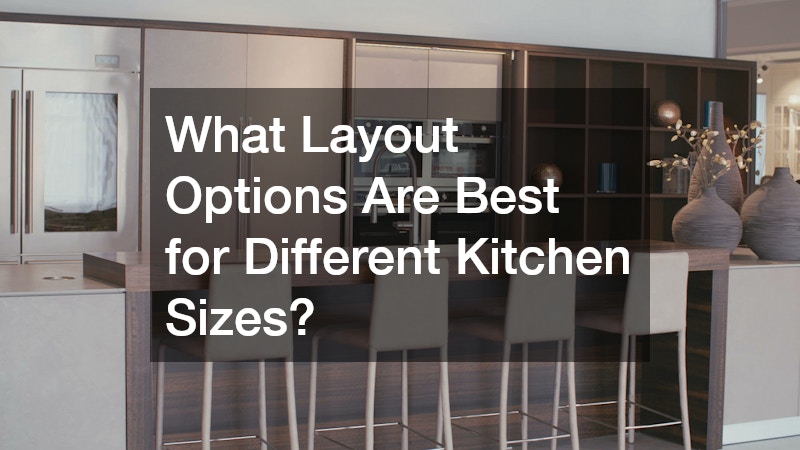Remodeling your kitchen is one of the most rewarding home improvement projects you can take on—but it’s also one of the most complex. Whether you’re dealing with outdated cabinets, cramped layouts, or simply a lack of inspiration, solid remodel plans can transform your kitchen into a space that reflects both your lifestyle and your design sensibility.
Balancing beauty and function isn’t just about picking pretty finishes or installing top-of-the-line appliances. It’s about aligning your kitchen with the way you actually live. That means considering how often you cook, how many people share the space, and how everything from lighting to layout impacts your daily routine.
From choosing the right cabinet makers to navigating the differences between quartz counters and granite counter options, every decision should feed into a cohesive, functional vision. You’ll also need to consider electrical repairs, plumbing updates, and whether your kitchen should follow the latest design trends or stick to timeless principles.
This guide walks you through every stage of the kitchen remodel process—from setting your priorities to working with trusted professionals like local plumbers, cabinet companies, and local electricians. Let’s get started with how to put effective remodel plans in motion.
How Do I Start Planning a Kitchen Remodel?

Setting a Budget
The first step in successful remodel plans is defining your budget. Think beyond just the cost of materials and appliances—factor in labor, unexpected expenses, and a contingency buffer of at least 10 to 15 percent. Cabinet makers, for example, often require deposits upfront, and countertop choices like a granite counter or quartz counters can vary significantly in price.
Having a firm budget helps you make smarter choices and prioritize what truly matters, whether it’s splurging on custom cabinetry or allocating funds for a new electrical panel to support upgraded appliances.
Defining Your Needs and Wants
Once you know your budget, outline what’s essential and what’s just nice to have. Do you need more counter space? Is your current layout working? Do you constantly trip over pets and people in a cramped galley kitchen? Write it all down.
A solid remodel plan should be centered around solving your biggest pain points. That could mean coordinating with local plumbers to reconfigure water lines, or working with a bathroom remodeling contractor if the kitchen and adjacent bath are part of the same project.
Choosing a Design Inspiration
Pinterest boards, magazine clippings, or even your favorite restaurant’s open kitchen can serve as design inspiration. Identify patterns in the styles you love. Are you drawn to warm wood tones from boutique cabinet companies or sleek, modern finishes from a local countertop showroom?
Collecting visual references helps streamline communication with construction companies and design professionals. It also prevents mismatched decisions that can derail even the best remodel plans.
What Are the Key Elements of a Well-Functioning Kitchen?
Work Triangle Efficiency
The classic kitchen triangle—sink, stove, and refrigerator—is still a useful concept. Your remodel plans should ensure that movement between these points feels natural and unobstructed.
Poor triangle spacing can lead to inefficiencies or even safety hazards. If your kitchen layout is limited by walls or structural elements, consult construction companies to explore whether layout changes are feasible.
Storage Solutions and Space Utilization
Cabinet makers can help you customize storage options that maximize every inch of available space. Roll-out drawers, built-in spice racks, and toe-kick drawers can all enhance functionality. Similarly, cabinet companies often offer pre-designed modular solutions that work well with a tighter remodel budget.
If you’re already working with a bathroom remodeling contractor for adjacent spaces, consider coordinated cabinetry for a cohesive look.
Ergonomics and Accessibility
A well-functioning kitchen should also feel comfortable to use. That means considering things like counter height, sink depth, and placement of heavy appliances. Remodel plans that include options for seated workstations or pull-out shelves are ideal for aging-in-place or accessible design goals.
Working with a local electrician may be necessary to ensure accessible lighting and outlet placement, especially if your existing kitchen was built decades ago.
How Do I Choose the Right Materials for My Kitchen?

Cabinet Materials and Finishes
Cabinets take up a huge visual and functional portion of your kitchen. Wood, laminate, MDF, or even metal cabinets each have different cost, durability, and aesthetic implications.
Custom cabinet makers can offer more flexibility in size and style, while cabinet companies often provide budget-friendly options that still offer high-end finishes. Choose finishes that complement your lifestyle—matte finishes hide fingerprints better, while glossy ones can reflect light beautifully.
Countertop Materials
Choosing between a granite counter and quartz counters is often a matter of both taste and practicality. Granite is natural, unique, and heat-resistant. Quartz is engineered for consistency, stain resistance, and ease of care.
A visit to a local countertop showroom can help you compare these materials side by side. Don’t forget to factor in edge profiles and installation fees in your remodel plans.
Flooring Options
Durable flooring is essential in a kitchen. Consider tile, luxury vinyl plank, engineered hardwood, or even sealed concrete. Construction companies can help assess your subflooring and recommend materials that suit your home’s age and climate.
Make sure your chosen flooring matches the rest of your materials aesthetically while supporting the heavy foot traffic kitchens endure.
What Are the Latest Trends in Kitchen Design?
Color Palettes and Textures
Neutral tones like warm taupe, deep green, and charcoal are replacing bright whites. Textured cabinetry, fluted wood accents, and mixed materials are on-trend and add character without sacrificing function.
Your remodel plans should embrace color carefully, balancing trendiness with long-term appeal. Coordinating with cabinet companies or cabinet makers ensures that color and texture flow seamlessly with countertops and flooring.
Smart Kitchen Technology
Smart ovens, refrigerators, and faucets are making their way into modern remodel plans. These tech additions can streamline your kitchen experience, save energy, and even increase your home’s resale value.
You’ll likely need a local electrician to handle installation and electrical repairs, particularly if your kitchen wasn’t originally wired for modern smart systems.
Open Concept Layouts
Open kitchens remain popular for their social and visual appeal. Knocking down walls may require structural input from construction companies and consultations with a local plumber to reroute pipes.
If you’re including adjacent spaces in your remodel plans, like a dining room or half-bath, make sure the overall layout still supports practical zones for cooking, eating, and gathering.
How Can I Maximize Storage in My Kitchen?
Innovative Cabinetry
Cabinet makers now offer a wide range of smart storage features—think corner carousels, appliance garages, and lift-up doors. These solutions improve access and make use of awkward spaces.
Even cabinet companies with pre-designed lines often include customizable inserts that work well for maximizing efficiency.
Pantry Organization
A walk-in pantry is great, but even a tall cabinet with well-designed pull-out drawers can serve the same purpose. Don’t forget about lighting—a local electrician can install motion-sensor LED strips for visibility and energy savings.
Work pantry organization into your remodel plans early, especially if you’re considering plumbing for a coffee bar or prep sink.
Utilizing Vertical Space
Ceiling-height cabinets, pot racks, and wall-mounted shelving all contribute to a more functional kitchen. Vertical space is especially useful in small kitchens, where floor area is limited.
You may also want a local electrician to add upper-cabinet lighting or under-cabinet LED strips to highlight your vertical storage in both a practical and aesthetic way.
What Lighting Options Should I Consider?

Task Lighting
Proper task lighting ensures safety and accuracy during meal prep. Popular options include under-cabinet lights and pendant lights over islands. Remodel plans should prioritize these zones when coordinating with a local electrician.
Ambient Lighting
Ambient lighting fills the room with general illumination. Recessed ceiling lights are popular and can be installed by a local electrician or through your general contractor.
If you’re dealing with outdated fixtures or inadequate light coverage, electrical repairs may be necessary before installing new lighting.
Accent Lighting
Accent lights draw attention to focal points like open shelves, artwork, or a backsplash. You might also consider toe-kick lighting or uplighting for architectural drama.
Talk to your countertop showroom or cabinet companies to ensure your finishes are showcased beautifully under layered lighting.
How Can I Ensure My Kitchen Is Eco-Friendly?
Sustainable Materials
Bamboo, reclaimed wood, and recycled materials are all sustainable options that work beautifully in kitchens. Many cabinet makers now offer eco-friendly lines with low-VOC finishes.
Remodel plans should also include conversations with your contractor about where to source these materials locally.
Energy-Efficient Appliances
Look for Energy Star-rated appliances to reduce electricity consumption. Smart refrigerators and dishwashers can also reduce water waste and utility bills.
Coordinate with a local electrician to ensure your wiring supports high-efficiency appliances, especially if your home is older.
Water Conservation Tips
Low-flow faucets and smart dishwashers help minimize water usage. A local plumber can recommend fixtures and perform the necessary installation or upgrades.
If your kitchen remodel includes any outdoor water lines or adjacent wet bars, involve your plumber early in the planning phase.
How Do I Choose the Right Appliances for My Kitchen?
Evaluating Appliance Needs
Start by listing the appliances you currently use and those you wish you had. Maybe it’s a double oven, a warming drawer, or a beverage cooler.
Your remodel plans should align appliance choices with layout, budget, and energy usage. Consultation with a local plumber or local electrician may be required for complex installations.
Considering Size and Fit
Measure everything—twice. Appliance dimensions must align with cabinetry, counter space, and adjacent pathways. Visit showrooms and bring your kitchen measurements with you.
Cabinet companies can build around appliance specs to ensure a seamless fit and appearance.
Reviewing Energy Efficiency Ratings
Energy Star ratings are the gold standard, but check for updated models with added smart functions. Energy efficiency matters not just for environmental reasons but for long-term savings.
In older homes, a local electrician may need to complete electrical repairs or upgrades before these high-tech appliances can be safely installed.
What Layout Options Are Best for Different Kitchen Sizes?

Galley Kitchens
Galley kitchens work well in small spaces and can still be stylish with thoughtful design. Vertical storage, efficient lighting, and clever cabinet solutions are key.
Remodel plans for galley kitchens often involve close collaboration with local plumbers to ensure plumbing stays within the narrow layout.
L-Shaped Kitchens
These offer flexibility and create a natural workflow. If you have the space, an L-shape combined with an island is especially effective.
Quartz counters or a granite counter can add visual weight and contrast to the L-shape. Make sure your cabinet makers or cabinet companies can accommodate corner cabinets efficiently.
Island Layout Benefits
Islands are multipurpose—used for cooking, dining, and storage. They also offer opportunities for additional plumbing and electrical work, so loop in your local plumber and electrician during early planning.
Visit a countertop showroom to select materials that complement the island’s purpose and position in the room.
How Can I Incorporate Personal Style in a Functional Kitchen?
Adding Personal Touches with Decor
Display open shelves with favorite cookbooks or unique pottery. Add wall art or a custom backsplash to reflect your personality.
These small elements should be part of your remodel plans from the beginning, not tacked on later.
Mixing Traditional and Modern Styles
Don’t be afraid to mix a farmhouse sink with sleek quartz counters or modern lighting with traditional wood cabinetry. This contrast adds warmth and visual interest.
Cabinet makers can customize door profiles and finishes that make this style fusion feel cohesive.
Customizing Fixtures and Hardware
Fixtures and hardware are the jewelry of the kitchen. Think matte black pulls, antique brass faucets, or even colored knobs.
Work with local plumbers and cabinet companies to coordinate fixture installation and ensure they align with the overall design theme.
Conclusion
A kitchen remodel isn’t just about choosing pretty finishes or trendy features—it’s about creating a space that works for your lifestyle. With the right remodel plans in place, you can confidently balance aesthetics with practicality to design a kitchen that looks incredible and functions even better.
Whether you’re coordinating with cabinet makers or making a final call between quartz counters and a granite counter, every decision counts. Don’t overlook the behind-the-scenes work, either. From electrical repairs to plumbing reroutes, trusted local plumbers and electricians play a huge role in the success of your remodel.
Working with experienced construction companies, visiting a local countertop showroom, and sourcing recommendations for cabinet companies will all support your remodel journey. Planning a kitchen that reflects your taste and meets your needs takes time, care, and attention to detail.
So whatever your starting point, let your remodel plans guide you toward a kitchen that feels as good to use as it looks to admire. Beautiful. Functional. Yours.
